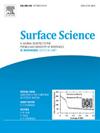光催化CO2还原中氧化物吸附性能的系统计算研究
IF 2.1
4区 化学
Q3 CHEMISTRY, PHYSICAL
引用次数: 0
摘要
虽然过渡金属催化剂的吸附特性已经得到了广泛的研究,从而发现了各种缩放关系、催化活性描述符和完善的计算模型,但对半导体催化剂的类似理解尚未实现。在这项工作中,我们提出了一种高通量密度泛函数理论,研究了光催化CO2还原反应中5种氧化物的吸附特性:TiO2(金红石和锐钛矿),SrTiO3, NaTaO3和CeO2。使用系统的方法,我们详尽地确定独特的表面和构建吸附结构进行几何优化。然后,我们进行了数据驱动的分析,揭示了弱吸附能缩放关系的存在,感兴趣的吸附剂与氧表面位点相互作用的倾向,以及吸附时板坯变形的重要性。我们的发现是在实验观察的背景下提出的,并与之前研究过的催化剂类别(如纯金属和含碲半导体)进行了比较,并加强了对半导体上特定位置表面现象研究的综合方法的需要。本文章由计算机程序翻译,如有差异,请以英文原文为准。

Systematic computational study of oxide adsorption properties for applications in photocatalytic CO2 reduction
While the adsorption properties of transition metal catalysts have been widely studied, leading to the discovery of various scaling relations, descriptors of catalytic activity, and well-established computational models, a similar understanding of semiconductor catalysts has not yet been achieved. In this work, we present a high-throughput density functional theory investigation into the adsorption properties of 5 oxides of interest to the photocatalytic CO2 reduction reaction: TiO2 (rutile and anatase), SrTiO3, NaTaO3, and CeO2. Using a systematic approach, we exhaustively identify unique surfaces and construct adsorption structures to undergo geometry optimizations. We then perform a data-driven analysis, which reveals the presence of weak adsorption energy scaling relations, the propensity of adsorbates of interest to interact with oxygen surface sites, and the importance of slab deformation upon adsorption. Our findings are presented in the context of experimental observations and in comparison to previously studied classes of catalysts, such as pure metals and tellurium-containing semiconductors, and reinforce the need for a comprehensive approach to the study of site-specific surface phenomena on semiconductors.
求助全文
通过发布文献求助,成功后即可免费获取论文全文。
去求助
来源期刊

Surface Science
化学-物理:凝聚态物理
CiteScore
3.30
自引率
5.30%
发文量
137
审稿时长
25 days
期刊介绍:
Surface Science is devoted to elucidating the fundamental aspects of chemistry and physics occurring at a wide range of surfaces and interfaces and to disseminating this knowledge fast. The journal welcomes a broad spectrum of topics, including but not limited to:
• model systems (e.g. in Ultra High Vacuum) under well-controlled reactive conditions
• nanoscale science and engineering, including manipulation of matter at the atomic/molecular scale and assembly phenomena
• reactivity of surfaces as related to various applied areas including heterogeneous catalysis, chemistry at electrified interfaces, and semiconductors functionalization
• phenomena at interfaces relevant to energy storage and conversion, and fuels production and utilization
• surface reactivity for environmental protection and pollution remediation
• interactions at surfaces of soft matter, including polymers and biomaterials.
Both experimental and theoretical work, including modeling, is within the scope of the journal. Work published in Surface Science reaches a wide readership, from chemistry and physics to biology and materials science and engineering, providing an excellent forum for cross-fertilization of ideas and broad dissemination of scientific discoveries.
 求助内容:
求助内容: 应助结果提醒方式:
应助结果提醒方式:


